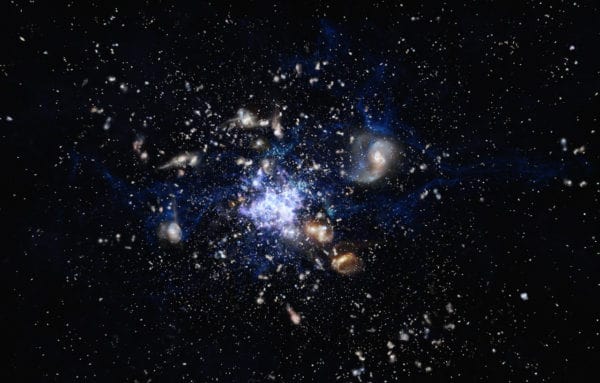

You never know what you’ll find up in the starry heavens once you take a look around.
For one international group of scientists, monitoring far away galaxies are checking out some strange, lingering bursts of energy coming from one galaxy named NGC 4697, the results were surprising -an altogether new beast of an event they’re calling a form of ultraluminous X-ray bursts.
”We’ve never seen anything like this,” says astronomer Jimmy Irwin from the University of Alabama. “Astronomers have seen many different objects that flare up, but these may be examples of an entirely new phenomenon.”
The research team began their quest as a result of two earlier sightings of intense X-ray flares, first documented in 2003 and 2007. The team followed up by poring over data covering 70 galaxies nearby NGC 4697 from NASA’s Chandra X-ray Observatory and identified two new examples of the strange activity, one in the galaxy NGC 4636 and the other in the galaxy 5128.
“We found two ultraluminous flaring sources in globular clusters or ultracompact dwarf companions of parent elliptical galaxies,” say the study’s authors, whose research appears in the journal Nature. “One source flared once to a peak luminosity of 9 × 1040 erg per second; the other flared five times to 1040 erg per second.”
Ultraluminous X-ray sources are commonly occurring events in the universe, named so because of their production of X-ray and other electromagnetic radiation as a result of the intense collision between particles under extreme pressure, releasing energy in the form of light, heat and radiation. Solar flares from our own Sun, for example, can produce X-rays, gamma rays and ultraviolet radiation when masses of electrons, ions and electromagnetic energy are spewed out from the Sun in a brief flash (some of which can play havoc with telecommunication and satellite systems here on Earth).
But unlike known examples of ultraluminous X-ray sources, the newly identified pair have a long-lasting time span. Researchers found that the new activity was recorded as a quick build-up of energy followed by a slow return to normal radiation levels over the course of about an hour.
The team believes that the ultraluminous X-ray bursts may be caused by the gobbling up of stars by black holes which can produce bright bursts of energy and heat, the equivalent of “millions of degrees Celsius,” says Dr. Gregory R. Sivakoff from the Department of Physics at the University of Alberta, co-author of the study.
The team speculates that whatever the exact cause of the ultraluminous X-ray bursts, they are likely occur with regularity, similar to the common occurrence of solar flares, without disrupting the dynamics of their surrounding environment. At the same time, they believe a lot more can be learned about the universe and its workings from these new X-ray flares. “Now that we’ve discovered these flaring objects, observational astronomers and theorists alike are going to be working hard to figure out what’s happening,” says Dr. Sivakoff.
Comment
One thought on “Strange X-ray bursts are coming from far away galaxies, astronomers conclude”
Leave a Reply
You must be logged in to post a comment.




 Share
Share Tweet
Tweet Share
Share




These articles never report the actual dates of the flares.